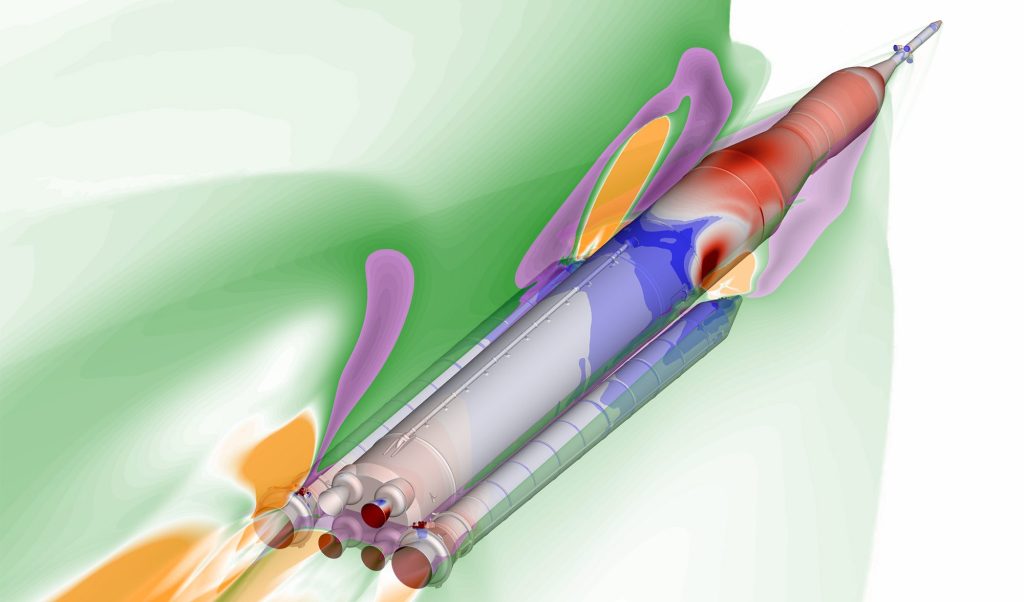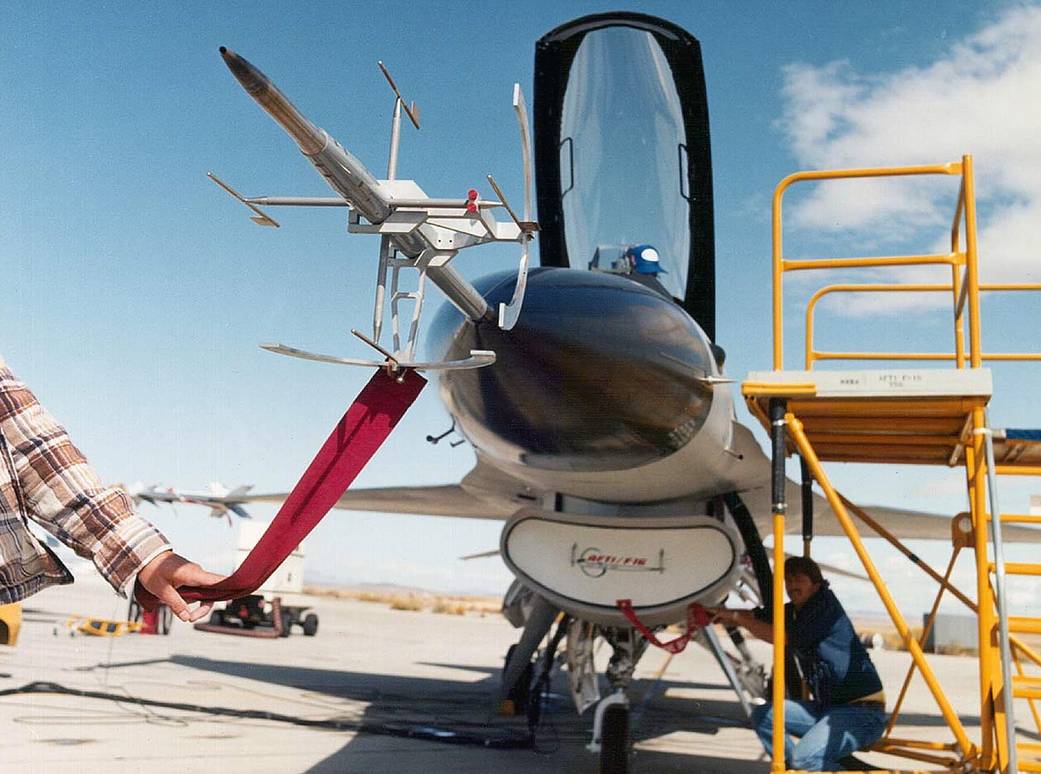ECN-20752A
This close-up view shows the Advanced Fighter Technology Integration (AFTI) F-16 air probe early in the research program. It consisted of a nose boom resembling a long pipe, and four indicators that looked and acted like weather vanes. The indicators on the left and right measured pitch, or the movement of the airplane’s nose up or down. Those on the top and bottom of the boom measured yaw, or movement of the nose to the left or right.
Similar probes were standard on most research and prototype aircraft. The data from the indicators was recorded aboard the aircraft and/or radioed to the ground. This data included the amount of yaw and pitch at any given time, and the rate at which both motions changed in flight. This information, subsequently processed and compared to wind tunnel results, may have revealed stability and aerodynamic abnormalities.
The two metal half-circles and their attachment fixtures were not part of the air probe. Rather, they were used to calibrate the indicators on the ground, enabling the data to be corrected for instrument errors. The figure in the photograph is shown holding a red “Remove Before Flight” ribbon, a reminder to the ground crew that it must be taken off prior to a research mission.October 28, 1982NASA Photo› F-16 AFTI Project Description
2 min read


























